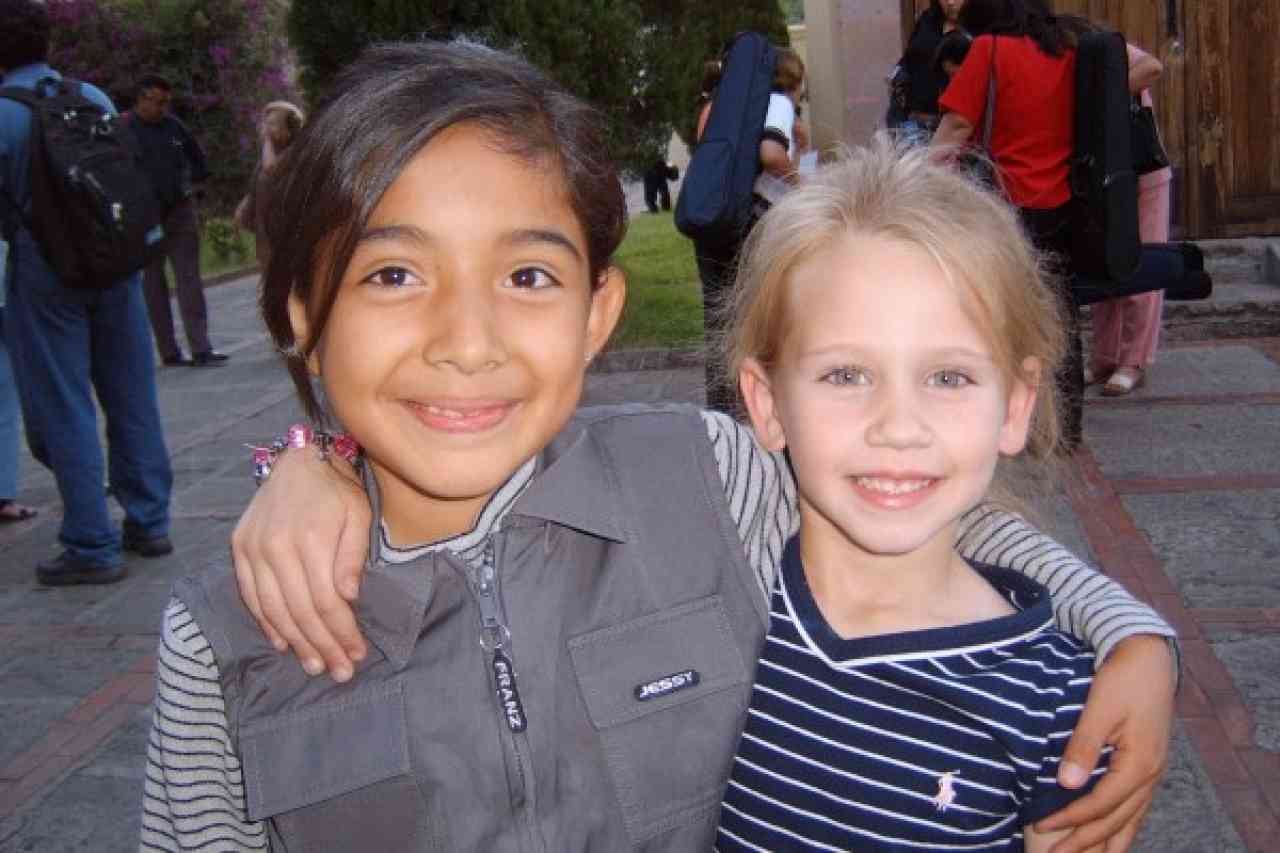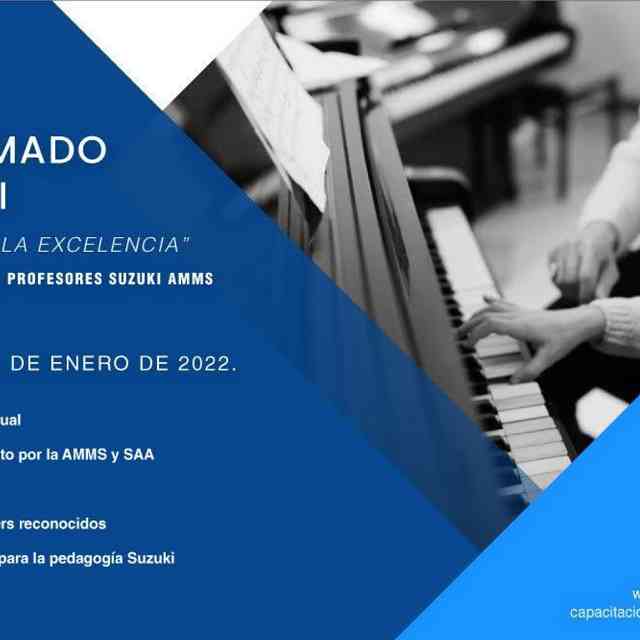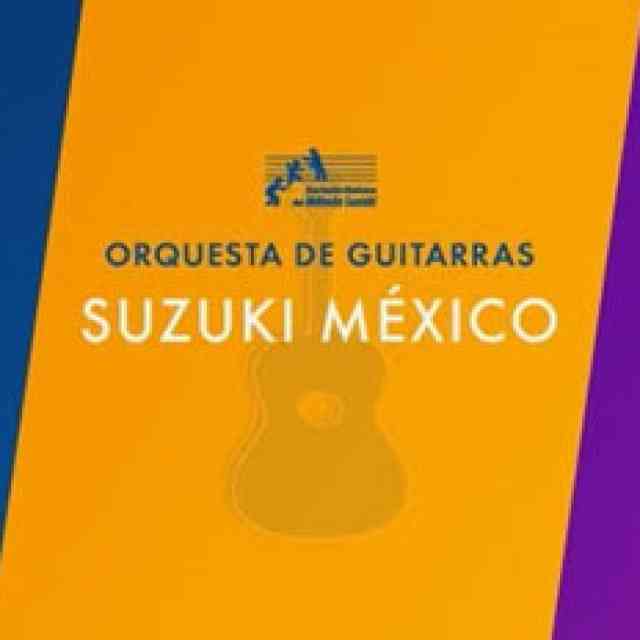September 14th-23rd 2005
Pre Festival course, Doris Koppelman writes:
This summer, I was invited by the Suzuki Association of Mexico, to give a workshop for teachers at the University of Guanajuato. The subject was “Technic Through the Repertoire,” which follows the development of technique from Twinkle through the demands of advanced literature. Two of my teenage students, Erin Gable and Adrienne Kwan, came with me. The teachers, some of whom were new to Suzuki, came from various parts of Mexico. Their excitement, enthusiasm, and desire for more knowledge were impressive—even to the point of persuading me to extend the course by several hours!
The hospitality we received was warm and generous. The first morning in the beautiful house where we were comfortably accommodated, we had a play-in with two of the children of the family (a violinist and cellist) and my two students (who played some solos and did some accompanying). Instant friendship through music!
The Suzuki Association of Mexico is young and their economic problems are serious but their intense conviction, desire and determination are strong. Let’s keep in contact with our interesting neighbors to the south. We share the love of music and the desire to bring its beauty to every child.
Our Trip to Guanajuato Mexico
By Adrienne Kwan, student of Doris Koppelman
Underground tunnels, extremely skinny streets, fresh fruit vendors at every street corner—this is what Guanajuato, Mexico is about. I was fortunate this summer to venture down to the wonderful city, Guanajuato with my piano teacher, Ms. Doris Koppelman and Erin Gable. Guanajuato is famous for its beauty and culture. One of the most fascinating parts of the city, though, is its underground tunnels. To travel around the city, people must drive through multiple tunnels that are built out of stone or brick. The experience of winding through tunnel after tunnel was nauseating but fun. We were all able to explore Guanajuato. The shops were filled with little goodies and a lot of jewelry. We all bought Mexican candy to bring back to our families. The marketplace was filled with vibrant flowers, chunks of meat on display, and other unusual items. The food was distinctly Mexican. Everything was always topped with fresh cheese and tortillas were a staple in every meal.
Guanajuato has a budding Suzuki program. The main coordinator is a wonderful lady named Etna, who is bubbly and extremely hospitable. She offered us her gorgeous home in Leon, a city that is an hour away from Guanajuato. The hour drive did not deter Beatriz from attending the Suzuki workshop. This motivation and passion found in Beatriz was also evident in the other teachers that attended the Suzuki workshop. All the teachers were eager to learn and soaked up everything that Ms. Koppelman taught them. The trip was an eye opening experience for me because I realized that I couldn’t live without music. It was a great trip filled with food, new friendships, and most importantly, music.
Erin Gable, student of Doris Koppelman, writes:
When a teenager thinks of Mexico, most likely they imagine weekend trips to Tijuana with friends, or trips to the tourist infested Baja region for days at the beach. Most probably don’t picture the beauty of towns like Guanajuato, which looks more like Italy than Mexico. Guanajuato is a beautiful town. The center is built between two hills, and over time, the town has expanded up the hills. One thing that struck me as very different is the color. In Mexico, a person doesn’t think twice about painting their house bright orange or purple. This makes for an incredibly beautiful landscape as you look across the valley. All the roads are one way, extremely curvy, and nearly impossible for foreigners to navigate. The curvy, one-way underground streets, which make up Guanajuato’s main roads, make it impossible to see which direction you are going. The tunnels were once filled with water, but today, all of them are open for cars and pedestrians.
While in Mexico, we stayed with Beatriz Muñoz and her family in Léon. The Muñoz family was very hospitable. Adrienne and I were able to hang out with the children on several occasions, and although they practiced their English more than we practiced our Spanish, it was fun to see what it is like to live in Mexico. Those involved in the small Suzuki program in Mexico cannot take advantage of the fun concerts and opportunities that we do so freely. Adrienne and I performed a small, informal concert for Mrs. Koppelman’s teacher class, and it was amazing how appreciative they were of our playing.
My trip to Mexico made me realize that I shouldn’t take for granted the fact that we have a thriving music community in San Diego, with many involved students, teachers, and parents, as well as wonderful learning opportunities. However clichéd it may sound, I will remember this trip my entire life, not only because of what I saw or did, but because of the people I met and their attitudes.
Beatriz de Muñoz, Leon, Mexico writes:
I am very happy to be able to write about my experiences during the III Suzuki Festival held in Guanajuato. I have known about the Suzuki Method for about 17 years since I first heard about it in Philadelphia. Twelve years later Sara, my youngest daughter wanted to learn the violin and when I looked for a school I was told, “We have teachers who have just taken Suzuki training. Do you know about this? You can imagine my happiness! We started together; Sara on the violin and me on the piano.
This third festival has been organized by a team formed by Gabriel Pliego from Mexico City, Teresita Chagolla taking care of the administrative part, Etna and me. All four of us were determined to make this festival work in the best possible way. We worked during weekends and holidays. We became very close as we listened to each other’s opinions and respected different points of view.
We had participants from all over Mexico including Mexico City, Nuevo León, Puebla, Chiapas, Veracruz and Morelos. I was very happy to know that some people like myself, had been wanting to find out about the Suzuki method and that the festival had encouraged them to come and participate. I am very thankful to have known Dr Suzuki’s approach. My two daughters now play the violin, and my sons play the cello. My husband, who never had a musical environment in his house, now enjoys hearing the children and me playing.
Laura (Laurita) Jáuregui de Campero from Portland, OR writes:
I can hardly express in words how excited and proud I am to see how the Suzuki movement is developing in my father’s country of Mexico. In the past two years I was able to take several of my Portland, OR, students to experience Mexico and all its culture, language and great people. I have seen my students play with other children communicating through the language of music. They beg to return to Mexico. I am moved to tears when I hear the children of both nationalities play the Suzuki repertoire. I hope I will be able to continue to share the legacy of Dr. Suzuki in Mexico through my continued training and experience as a Suzuki student.

Mckenna Martin and her new best friend.
“I made a good friend in Mexico. She spoke Spanish and I spoke English. But we laughed and played together. We had so much fun. I can’t wait to see her next year.”
—Mckenna Martin, 6-year old violin student from Laura’s program“Suzuki Festival in Guanajuato was a great experience. The town was beautiful and I enjoyed walking everywhere. It was my first trip to Mexico. I definitely want to go again next year.”
—Kennedy Martin, piano student, age 10
Rodrigo Gonzalez, Monterey, Mexico writes:
I arrived in the city of Guanajuato, and found my way through history and poetry-filled narrow streets to the place where the Suzuki encounter/festival was to take place. The site could not have been a better one; everything we needed was within reach, and we were surrounded by the beautiful architecture of the church of Compañia de Jesús and the Universidad de Guanajuato. I was received by an enthusiastic group of people, filled with happiness and expectation.
The philosophy course started guided by Caroline Fraser. I mean “guided” because from the beginning it was learning by observing, discovering, doing, assimilating, and concluding. She did not “preach” a lecture or a set of recipes; no, her teaching was about something else. Caroline, filled with energy, light and enthusiasm, and possessing a deep knowledge of music and pedagogy, guided us through the principles Shinichi Suzuki proposes for learning.
Every day we imitated, we sang, added new material, manipulated known material, and of course, had a lot of fun. It seemed, naturally, that we were learning about the Suzuki Method immersed in the very method; simply brilliant! The attention and enthusiasm of the group was kept at peak level at all times; for, how could it have been otherwise learning a philosophy that asserts everyone can? How could it have been otherwise before a philosophy that proposes all learning can be as natural as learning a mother tongue? The doors were being opened, behind which we could attain our own dreams, regardless of the difficulty; the doors behind which we could help our students reach high goals in a most natural way. We are invited to act now and with complete commitment, as the prosperity of our society is intrinsically knitted to that of each of its individual members.








